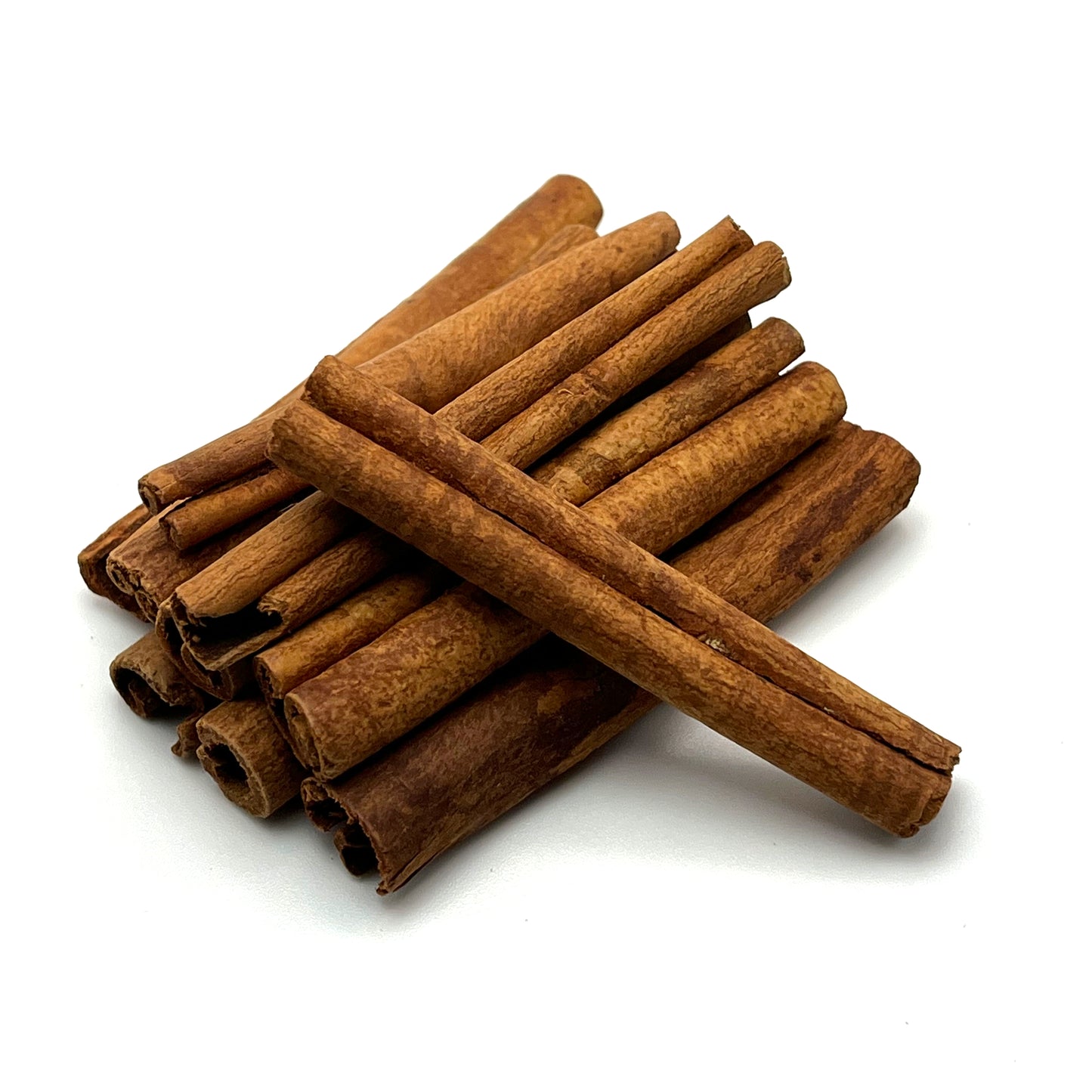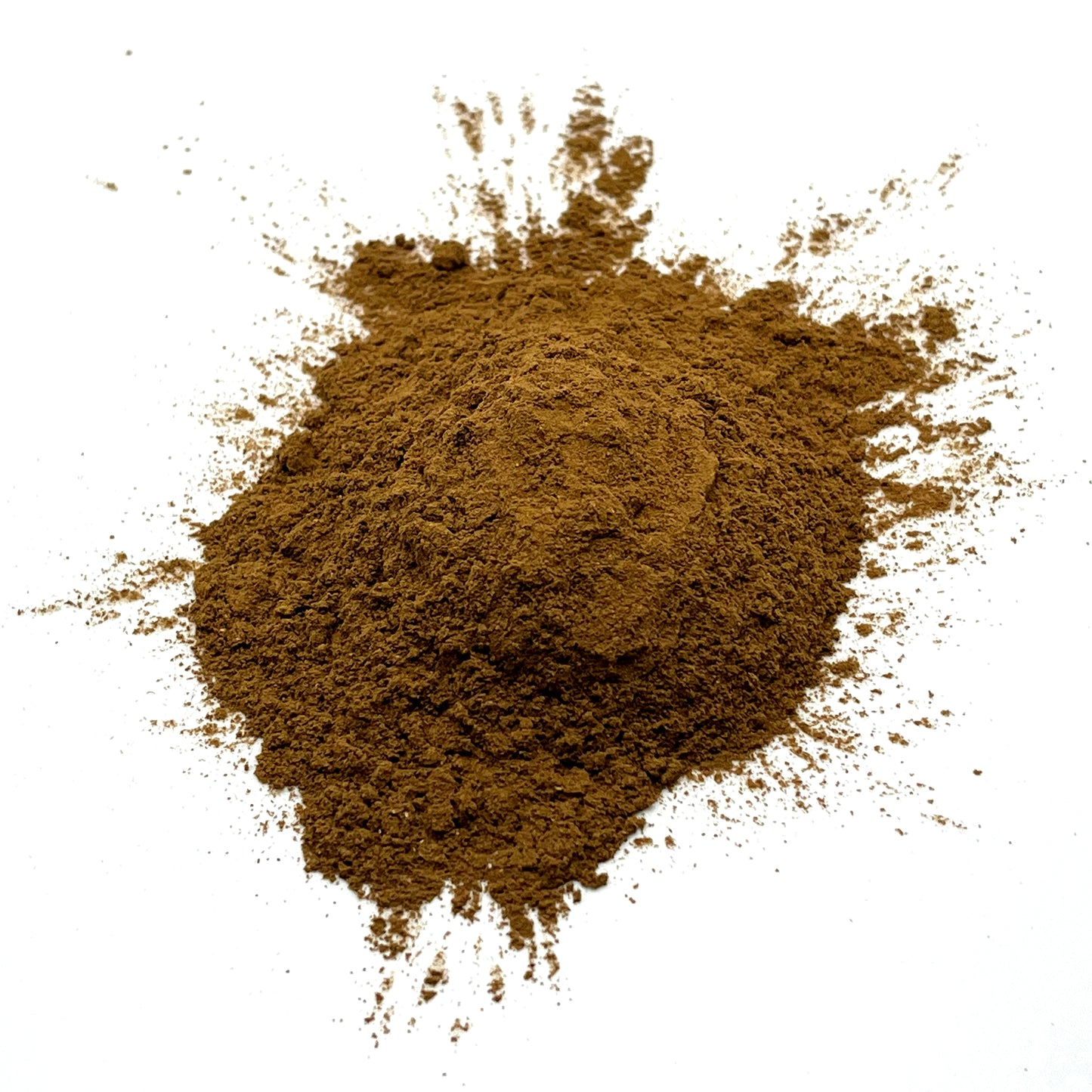Tasmanian Spice Traders
Cinnamon, Cassia
Cinnamon, Cassia
Couldn't load pickup availability
Botanical Name: Cinnamomum aromaticum ‘Cassia’
Flavor: Warm, Pungent, Spicy-Sweet, slightly Bitter
Origin: China
Use With: Beef, Chicken, Pork, Lamb, Fish, Seafood, Vegetables, Candies, Sweets, Desserts, and Baked Goods
Description: You may be surprised to learn that ‘Cassia’ is not another name for ‘Cinnamon’; though the two are closely related, Cassia is a completely different spice with several varieties of its own. Cassia is the ‘cinnamon’ that most people are familiar with and is the type most commonly consumed around the world. Almost all commercially produced ‘cinnamon’ powder available in supermarkets and other retailers is actually one of the four types of Cassia. Vietnamese or Saigon Cinnamon, produced from the Cinnamomum loureiroi tree is the boldest, spiciest, and most flavorful of the cassia varieties while Korintje or Indonesian Cinnamon, produced from the Cinnamomum burmannii tree, is the most mellow and the sweetest. Chinese Cinnamon or simply Cassia, produced from the Cinnamomun aromaticum tree, sits comfortably between these two in flavor, and Indian Cassia, produced from the Cinnamomum tamala tree, is the rarest of the cassia types (commercially speaking) with a flavor very similar to the Chinese variety. Cassia sticks (or quills) are dark red/brown in color and are typically a tightly curled, single thick, hard, piece of smooth bark that is dense, and woody making them better suited to being ground using a grater/spice rasp or microplane rather than a mortar and pestle or electric spice grinder.
Whether whole or ground, when compared to ‘True’ Cinnamon (AKA Ceylon Cinnamon) Cassia’s flavor is bolder and more intense, it is spicier, less sweet, sharper, and less refined with bitter notes. Its flavor (and aroma) has a definite ‘bite’ and is much more ‘forward’ than Ceylon Cinnamon and can compete with and easily overpower other flavors. Cassia’s brash nature makes it best suited for savory rather than sweet dishes where its strong flavor will not overpower.
Suggested Uses:
- Add whole Cassia sticks (and remove before serving) to marinades, sauces, soups, stocks, stews, and braises to infuse with warming, savory flavor, and aroma
- Use whole Cassia sticks in mulled wine and sider, or use as a ‘stir stick’ in tea, coffee, hot chocolate, or warm milk for a warming, comforting addition
- Use ground Cassia to flavor baked goods like cinnamon rolls, muffins, cookies, and sweet beads
- Use with apples, peaches, pears, and berries for poaching, stewing, or for hearty pies, crumbles, and cobblers
- Use to flavor Cinnamon Ice Cream, custards, mousse, crème brûlée, or other creamy desserts
- Use to add depth warmth, and complexity to curries, chile, and other savory dishes
- Add to dry rubs and seasoning blends for meats, poultry, fish, seafood, and vegetables for the grill or roasting
- Sprinkle a bit over your eggnog, a fruit smoothie, applesauce, fruit salads, or anywhere else you want to add a touch of warm comfort.




